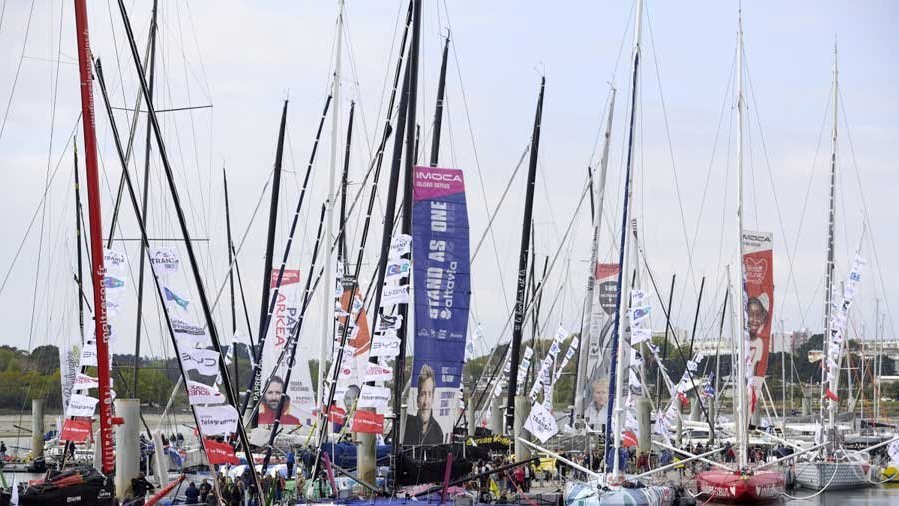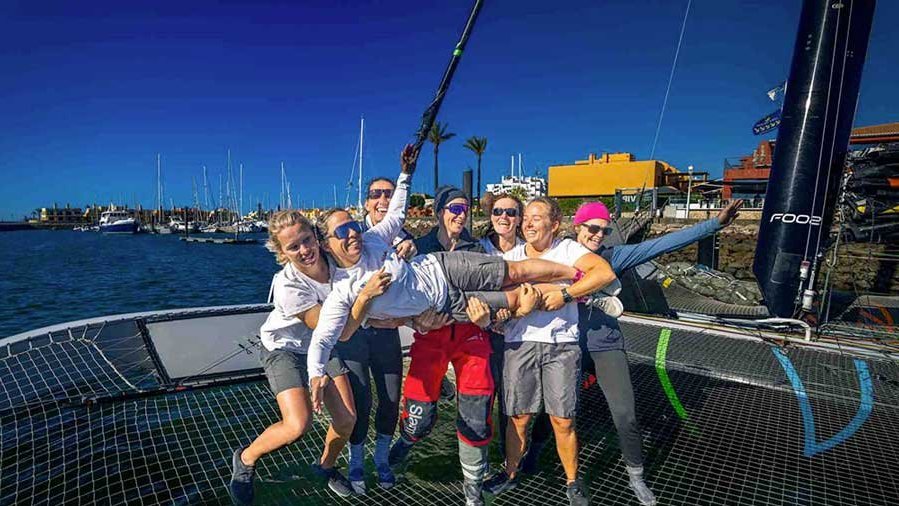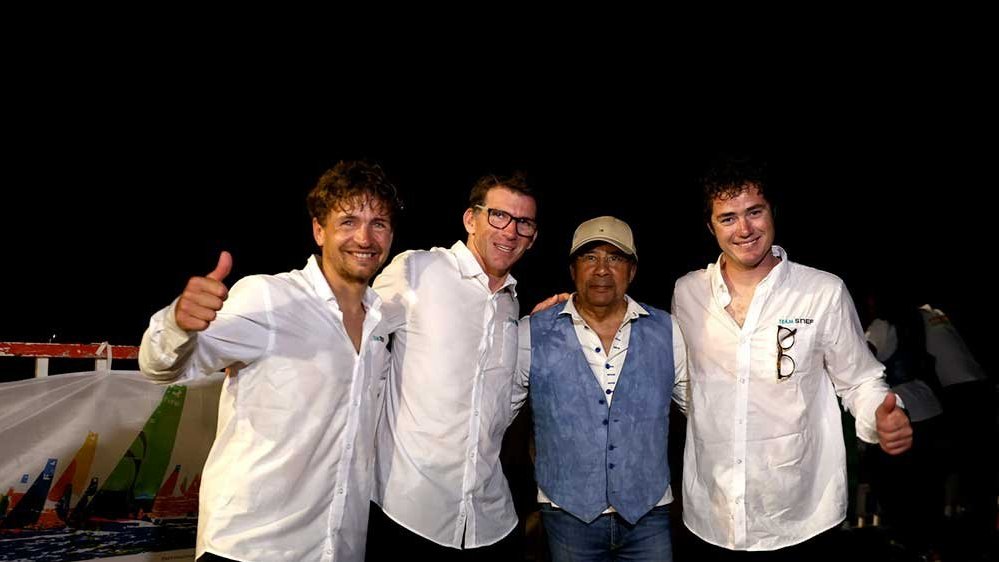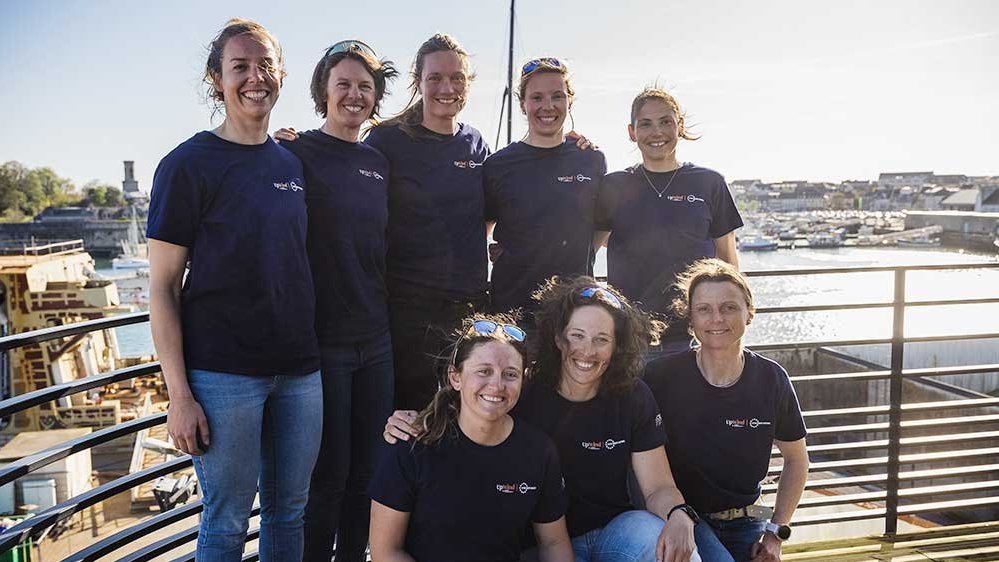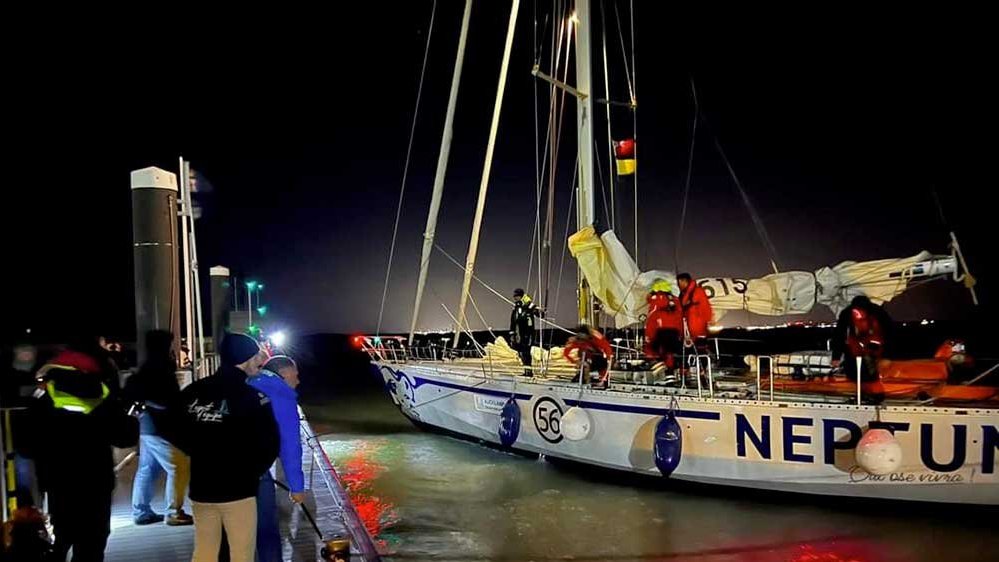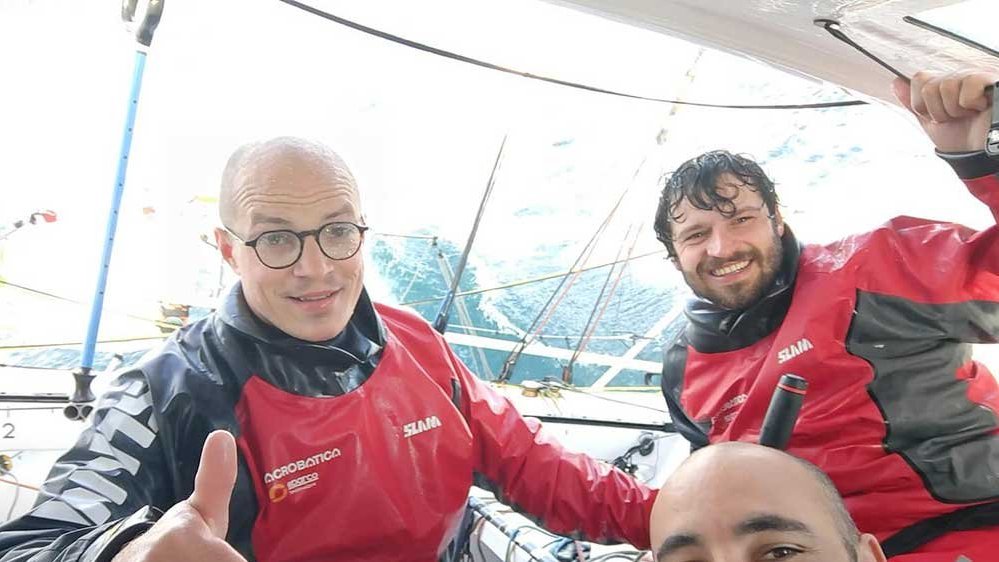Jules Verne Trophy
Orange looks for the escalator to the equator
vendredi 19 avril 2002 –
As forecast yesterday, the maxi-cat Orange has started to butt up against the anticyclone that is stretching out in the middle of the Atlantic. It is filling unduly and almost completely barring the Atlantic from east to west. So the mission for the next 24 hours is simple : to shortcut across it and as fast as possible to catch up with its eastern edge, which will also mark the coming of the SE trades... Clearly, a bonus operation for the Marseilles Giant that will then be able to stride out and set sail for the Equator, the next compulsory passage point. "The high is just ahead of us" declared Gilles Chiorri during today’s radio session after he had just consulted the day’s weather charts. "We’re currently in a 10 knot northerly and are we’re close hauled. The sky is superb with lots of depth. Yesterday we even saw the low that passed behind us, and I think that 20 miles here or there, we could have taken it right on the nose with its 60 knot winds. We can really say that we played it well ! I think we’ve got about 24 hours of this and then I hope we’ll be picking up the SE trades. Somehow, this very easterly position could end up being very beneficial to us !"
Indeed, this eastern option, which while it might seem rather unusual compared with other Jules Verne Trophy routes (1071 miles off Olivier de Kersauson’s position at the same latitude), could allow them to shoot off quickly towards the Doldrums via the express trade winds motorway. "If you take a blackboard", explained Bruno Peyron, "you’ll will see that the more to the east we enter this trade wind system that comes from the SE, the more we’ll be able to open the sails and pick up speed to reach the Equator. Consequently we’ll be entering the Doldrums well to the east, which is quite unusual for a return leg... that’ll be an interesting one to follow then !"
Meanwhile, the maxi-cat Orange is sliding on a smooth sea at more than 12 knots average and is reeling in 390 miles a day. Will she have to park in the next 24 hours... Will she immediately pick up the saving trades which will propel her to within 3000 miles of the finish ? The next 24 hours will be under close surveillance and so will the satellite photos and met’ charts !
Quote / unquote...
Gilles Chiorri : "The boat is dry, the sails are on deck, everything is open and we’ve even been able to wash ! The rhythm is a little more human, one could say. We’re also taking advantage to do some small repairs like one of our two water-makers which is giving brackish water. It’s Sébastien Josse who’s working on it. It’s a bit clockwork Orange on board at the moment !"
Pierrick Garenne / Mer & Média Translation David Palmer / SeaSpeak
Dans la même rubrique
TROPHEE JULES VERNE : Orange remonte l’Atlantique Sud par l’Est...
TROPHEE JULES VERNE : Peyron : " C’est une vraie course contre la montre ! "
TROPHEE JULES VERNE : Orange bute dans un anticyclone au niveau de Tristan da Cunha
TROPHEE JULES VERNE : Peyron tente de rejoindre les Alizés au plus vite
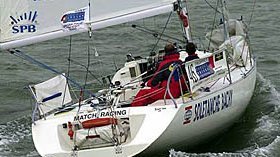 Photo : JP Epron / Maxi Catamaran Orange
Photo : JP Epron / Maxi Catamaran Orange
 Sea, Sail & Surf news
Sea, Sail & Surf news

